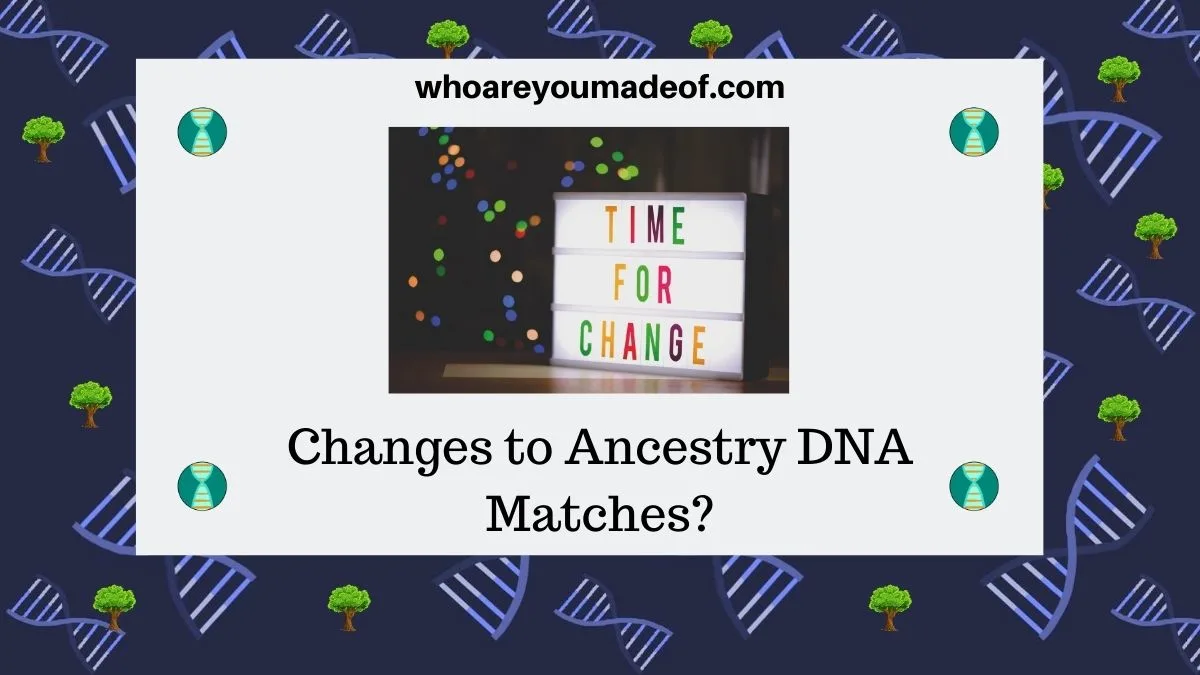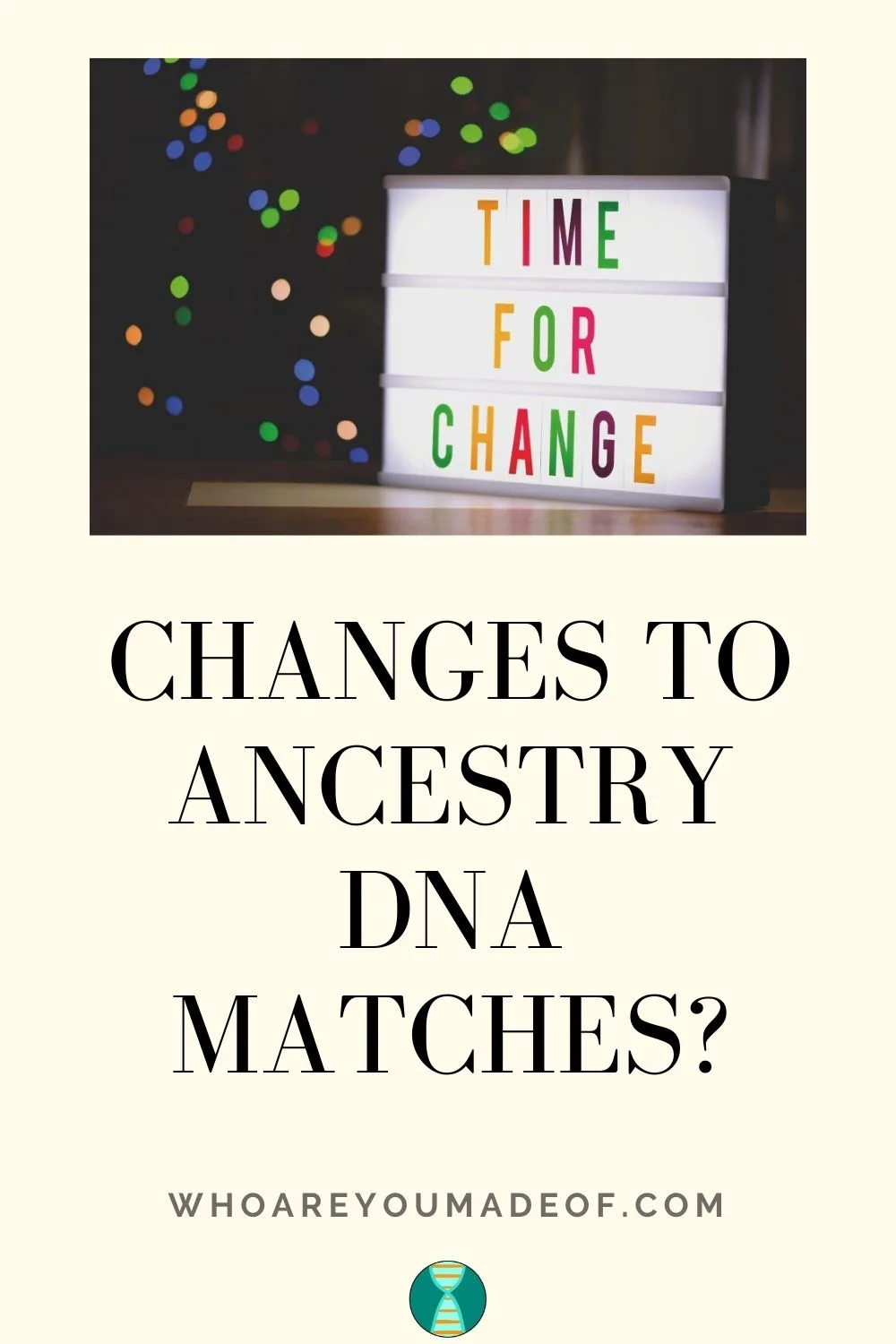Did you notice big changes to your Ancestry DNA match list? Do you have less DNA matches than you did before? In this post, learn what type of changes to expect from your DNA matches and how to navigate your list going forward.
You'll also find out:
- Why you soon might see a different number of DNA matches than you did before
- Why the number of DNA segments you shared with your matches may have changed
- What the longest segment is (and why it's helpful)

Ancestry DNA has the largest database of DNA testers, so even with the changes that we've seen to our match lists, we still find significantly more matches with family tree information included than with any other DNA testing site.
Changes to the number of DNA segments shared with matches
Ancestry's DNA matching algorithm has gone through changes that might affect the total number of shared DNA segments that show for some of your matches.
The updated number of shared segments is more accurate than before, which means that you can be more confident in your genetic relationship to your DNA matches.
We have always known that our connection to our closest DNA matches was very accurate, but as we moved further down our match list to our distant matches, the likelihood of a genealogical relationship became less likely.
Even if the number of shared segments you see changes, you shouldn't see a difference in the total number of shared centimorgans shared.
Can now see the length of longest segment shared - EXCITING!
Beginning mid-August 2020, Ancestry DNA users will now be able to see the size of the longest DNA segment shared with their DNA matches.
We will still be able to see the total number of shared DNA segments as well as the total number of shared centimorgans, as always.
This change is the most exciting of all of the changes to our Ancestry DNA match lists. The length of the longest shared segment is crucial to estimating how far back the most recent common ancestor might be.
DNA segments are broken up over time. We know that larger segments mean a more recent common ancestor and smaller ones can often indicate a distant common ancestor.
For those of us who come from communities with lots of endogamy (communities where distant cousins intermarried over the course of many generations), the largest segment size is one of the best ways to estimate the relationship between DNA matches.
Endogamous DNA matches share more DNA segments with each other than non-endogamous DNA matches. This is because they are related to each other in multiple ways and can have inherited DNA segments from their many shared ancestors.
This can result in a higher number of shared centimorgans leading us to believe that we are more closely related to our matches than we really are. The size of the largest segment can help us form a more realistic view of where we might need to look in our family trees to find our connection.
Even those people who don't have lots of endogamy in their family tree will find the largest segment data to be extremely helpful. We can share multiple DNA segments with third and fourth cousins matches, and knowing the size of the largest segment is invaluable.
Can no longer see matches that share segments smaller than 8 centimorgans
Towards the end of August, we might notice that we have fewer very distant DNA matches than we used to. This is because Ancestry's algorithm has been adjusted to be more accurate by not including those DNA matches that share less 8 centimorgans (cMs) of DNA with us.
In other words, we will no longer see those DNA matches that share 7.9 cMs or less on our DNA match lists.
Initially, this might seem like a negative. We'll have fewer DNA matches, and we want as many DNA matches as possible, right?
The truth is that a vast majority of the people who share less than 8.0 cMs with us are not really related to us anyway. Smaller DNA segments are more likely to be identical-by-state, or coincidentally identical DNA segments.
The larger the DNA segment, the more likely it is that the segment was inherited from a shared ancestor.
While some of those DNA matches who share very small amounts of DNA (fewer than 8.0 cMs) may really be related to us, most people will not notice a difference in the usefulness of their DNA match lists.
If you have already sent a distant cousin a message, or if you have added them to a group (with the colored dots), your list will retain the match. If you have included lots of very distant matches in groups or messages, then you may still see many of these distant matches on your list even after these changes have taken place.
It's important to note that it's still possible to have a false match sharing higher than 8.0 cMs. Even so, increasing the number to this threshold significantly increases the accuracy of our match lists by eliminating many hundreds of distant false matches.
As the size of the Ancestry DNA database continues to grow, this issue has become increasingly important.
Should you worry about the changes to your DNA match list on Ancestry?
Change can be difficult, I get it. However, these changes at Ancestry DNA are designed to make our experience using the Ancestry DNA site more efficient and the data that we receive more useful in a concrete sense.
While it's great to have 80,000 DNA matches (pre-update), what are the odds that I will ever have the time to go through every single match in order to determine the accuracy and connection?
I'm glad that my DNA match list will be a little bit shorter, since it will still consist of many thousands of DNA matches. It will be more manageable for me to use and my research will be significantly more effective.

Conclusion
I hope that this post has helped you understand more about the changes that your DNA match list on Ancestry has experienced. Plus, I really want you to be excited about having a more manageable, useful list of genetic relatives that can help you learn more about your family tree.
If you have any questions about something that you read in this post, or if you would like to share your own positive experiences with the changes that I mentioned in this post, please feel free to join us in the discussion below.
Thanks for stopping by today!


Momoftwo
Saturday 22nd of August 2020
One of the bigger arguments and upset over this is that African American people are stating that they need these segments to trace their ancestors and are upset that they will be losing this. What is your opinion on that?
Kristy Ostergard
Tuesday 18th of August 2020
Thanks for the updates; however, I tried to find a way to look or my longest shared DNA segment and can't seem to navigate Ancestry to find it. Is it available to everybody yet? I noticed you mentioned mid-August in your story, but I can't find it yet. If not yet available, have you heard an exact date yet? This is the paragraph I'm referencing in your story (about longest DNA segment match): "This change is the most exciting of all of the changes to our Ancestry DNA match lists. The length of the longest shared segment is crucial to estimating how far back the most recent common ancestor might be." Thanks so much for all the information you continually share. I always find it interesting and timely! K
Mercedes
Tuesday 25th of August 2020
Hi Kristy, Thank you so much for your comment and question. I believe that this feature has been completely released to all Ancestry DNA users - I hope you can see it on your match list now. Have a wonderful day! Sincerely, Mercedes
ggary haas
Tuesday 11th of August 2020
Thanks for clear analysis. Hope all the people scurrying to mark their tens of thousands matches read your post.
Mercedes
Friday 14th of August 2020
Thank you so much your comment! I hope they read it, too.